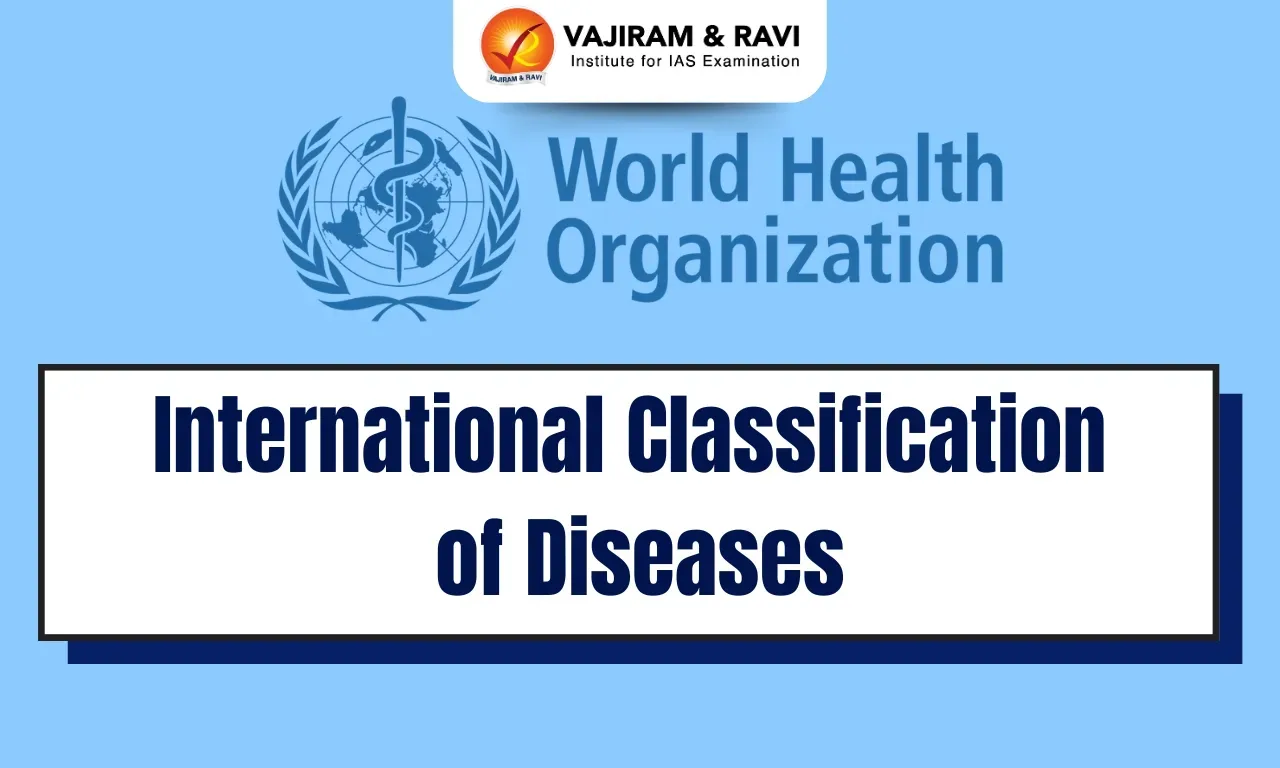International Classification of Diseases Latest News
Recently, the World Health Organization (WHO) has released the 2025 edition of the International Classification of Diseases 11th Revision (ICD-11).
About International Classification of Diseases
- It is a flagship World Health Organization product that serves as the basis for identifying health trends and statistics at country level and worldwide.
- ICD is at the foundation of WHO’s Fourteenth General Programme of Work efforts to accelerate progress towards health-related Sustainable Development Goals (SDGs), addressing inequalities and achieving relevant national health targets.
- Uses of International Classification of Diseases: It serves a broad range of uses globally and provides critical knowledge on the extent, causes and consequences of human disease and death worldwide via data that is reported and coded with the ICD.
- Clinical terms coded with ICD are the main basis for health recording and statistics on disease in primary, secondary and tertiary care, as well as on cause of death certificates.
- In India, the Central Bureau of Health Intelligence (CBHI) is an agency under the Ministry of Health and Family Welfare that serves as the WHO Collaboration Centre for ICD-related activities.
International Classification of Diseases FAQs
Q1: Which authority published the international classification of diseases?
Ans: World Health Organization (WHO)
Q2: What are the 5 levels of disease?
Ans: The natural history of a disease classified into five stages: underlying, susceptible, subclinical, clinical, and recovery/disability/death.
Q3: What is the international classification of diseases?
Ans: The International Classification of Diseases (ICD) is used to standardize mortality (death) statistics.
Source: WHO
Last updated on June, 2025
→ UPSC Notification 2025 was released on 22nd January 2025.
→ UPSC Prelims Result 2025 is out now for the CSE held on 25 May 2025.
→ UPSC Prelims Question Paper 2025 and Unofficial Prelims Answer Key 2025 are available now.
→ UPSC Calendar 2026 is released on 15th May, 2025.
→ The UPSC Vacancy 2025 were released 1129, out of which 979 were for UPSC CSE and remaining 150 are for UPSC IFoS.
→ UPSC Mains 2025 will be conducted on 22nd August 2025.
→ UPSC Prelims 2026 will be conducted on 24th May, 2026 & UPSC Mains 2026 will be conducted on 21st August 2026.
→ The UPSC Selection Process is of 3 stages-Prelims, Mains and Interview.
→ UPSC Result 2024 is released with latest UPSC Marksheet 2024. Check Now!
→ UPSC Toppers List 2024 is released now. Shakti Dubey is UPSC AIR 1 2024 Topper.
→ Also check Best IAS Coaching in Delhi
























